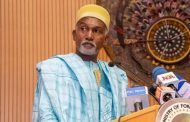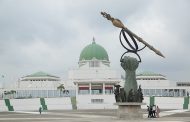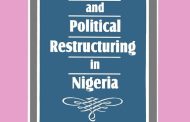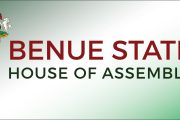Even as common place as scorched earth inter-group violence across Nigeria since the 1990s, the violent eruption in Bwari Area Council of Abuja, Nigeria on December 24th and 25th, 2017 has left many stranded on what actually happened or who did what. The many unresolved questions are for good reasons. First, the date on which it occurred is a problem in itself. December 25th would suggest automatic complicity of non-Christians, especially Muslims. Two, the degree of death and destruction: 10 persons were killed, property worth N3b devastated and 1300 traders affected in many different ways. Three, the curfew that followed came with the usual problems of human rights when troops take direct control of security, asking even elders and the not so old to frog jump, to raise their hands up, etc. Then the second round of the violence in June 2018, signaling snowballing of Bwari into another site of unending cycle of violence. The destabilizing impacts from these outcomes made interrogation of the clash an imperative.

Dr Martins Nwaneri

Mr. Maxwell Ukandu
This is what two crack researchers from Veritas University, Abuja – Dr. Martins Luther Nwaneri of the university’ Department of History and International Relations and Mister Maxwell Ukandu of the Department of Religious Studies – sank their teeth into for over a year now. It is still a work – in – progress but they have gathered all manner of discursive and empirical data from key informant interviewees; through poring over position papers, police reports and archival materials; spoken to all parties to the conflict – the Gbagyi and the Hausa-Fulani traditional authority through palace intellectuals nominated by the respective monarchs; the police and youth leaders. The totality of their data and the tentative inferences from same was what they have shared with a small group of fellow researchers and other intellectual investors in what Professor Gabriel Egbe, the Dean of the College of Humanities at Veritas University, Abuja calls the tradition of seminar presentation of research findings “aimed at provoking questions, reactions and comments towards opening new frontiers of knowledge”.
At the end of the day, they have come to a number of conclusions. The first is what acted as a trigger for the December 24-25th, 2017 violence. Surprisingly, it is neither religious nor cultural difference. Based on the police reports which centralized cultism but also on the key informant interviewees, the gist here is that the killing of a Christian member of the clashing gangs was the trigger of the violence. But the clash of cult gangs was represented by those operating ‘radio without wire’ as a Gbagyi-Hausa cum ethno-religious conflict. It was the narrative of the conflict as a natives/settlers violence that got to the majority of onlookers, with its own implications for escalation.
The second key conclusion is how cultural blinkers mediated the rest of the violence. In fact, the argument of the researchers is that there is more of culture than religion since many of the Gbagyi are also Muslims. There is a Gbagyi perception of Hausa, Fulani and Toro as strangers, with particular reference to who controls the land. Of course, culture hardly go alone without the economy as conflict issues. Bwari is developing fast and who controls the land and the markets has become more crucial than ever before.
The third contextual issue underpinning the conflict is the role of the government or of power. Gbagyi have been protesting how they ended up with an Esu who is a Third Class chief as opposed to the Sarkin Bwari who is a Second Class chief and who is superior in status to the Esu Bwari. That brings in the role of government or of power in the making of the conflict. The ascendancy of the Sarkin Bwari as a creation of power occurred in 1997 when the Staff of Office of Haikimi was presented to the last but one Sarkin Bwari. The Government pays him directly from the FCT unlike the Esu who is paid by Bwari LGC.

FCT Minister, Mohammed Bello, acting on a 1997 instrument to appoint a new Sarkin Bwari

COAS, Gen Buaratai: critics say troops subjected civilians to military codes in enforcing curfew
It was Gbagyi protestation of this that produced the Esu Bwari but who is a Third Class chief, lower in status than Sarkin Bwari. To a great extent, this is put as the basis of the conflict because that position is analysed in terms of the Jihad of 1804 from where the Suleija Emirate Council emerged and which established its authority over Bwari even as it was an absentee authority around Abuja. It was the Haikimi which operationalised the Emirate that metamorphosed into the Sarkin Bwari stool.
The protestation of the unequal power relations that emerged went on without violence until the death of the Sarkin Bwari in August 2017. The story is that before his death, there was a gentleman agreement that his reign would be the end of Sarkin Bwari. Someone somewhere aborted this as a new one was October 24, 2017, an act said to be in line with the powers conferred on the minister by relevant sections of the FCT Chiefs (Appointment & Deposition) Act, 1997 and in accordance with established customs and traditions of the Bwari Chiefdom. What that, however, heightened was subtle and open protest politics of the Gbagyi. Those who linked the cult clash to Gbagyi – Hausa violence obviously knew the most sensitive issue to play up and get the place burning. They achieved their aim, with painful consequences.
According to the researchers, the aftermath of the violence has been a security nightmare for the area, very stressful situation for the economy and inter-group relations. One of the giant eateries that planned a big outlet in Bwari has since killed the idea, packed what it was installing and left for somewhere else. Many people have relocated from Bwari, some to the Federal Capital Territory heartland, others to neighboring states and yet some others to their ‘home’ state or state of origin. The settlement pattern is assuming a kith and kin or ethno-cultural pattern too: Hausa-Fulani and Muslims to one side and the others to another side. The two months following the violence was hell as troops took charge of security. No one was above raising his hands up or being asked to frog jump for one indiscretion or the other. Entering Bwari was tough because of the checkpoint screening. Stockpiling of arms was suspected as much as the conflict being a driver of kidnapping. These do not include the number of persons who were killed in the course of the violence and the market losses suffered by the traders.
How did the authorities manage the conflict? According to the researchers, the Chairperson of Bwari Area Council at the time dashed to the site of the violence, pleading against further confrontation. The rioters ignored him. The FCT Minister, Mohammed Bello, also rushed to the site to assess casualties and destruction. It was he who announced the 6 pm – 6 am curfew. The last stakeholder is the security agencies. The army deployed to Bwari, positioned troops in points considered strategic and mounted checkpoints. They equally commenced regular patrol, including instant punishment for both those who consciously and even unconsciously broke the emergency codes. Night life died an unnatural death.
The researchers believe the 1999 Constitution is part of the conflict. It has a classification of dwellers into natives or indigenes and, by implication, settlers but it doesn’t observe this classification in dealing with the attendant contradictions even as there is no move in sight to amend that provision.

Bwari on fire then

Wanton destruction
The researchers have put a number of recommendations on the table. One is the argument that lasting peace cannot be imposed but worked out by the conflict parties, a task they think only professional peace builders are equipped to handle. So, the researchers are calling for engagement of those they call professional peace builders. They are also advancing the position that the Federal Government pays compensation to the victims of the destruction during the violence. The National Drug Law Enforcement Agency, (NDLEA) and the National Agency for Food and Drug Administration and Control, (NAFDAC) should, in their view, be called upon to intervene in the areas of the conflict that affects them. The authorities, they said, should aim to disarm and de-radicalise the youths. And they want the Esu Bwari elevated.
The audience of the researchers warmly welcomed the nature and direction of the research, describing it as bold. A scholar activist at Veritas University who said he has been involved in mediating the conflict confirmed hearing at one of the meetings about the gentleman agreement that the tussle would be settled anytime the Sarkin Bwari at the time died. His take is that how this did not happen when the last but one Sarkin Bwari died is worth documenting.
Another scholar at the presentation insisted the researchers need to bring up the political economy of the crisis. He would want to see the link between one of the cultural conflict parties and local markets, control of rents and the administration of such markets such that, like in Zangon Kataf, transfer of markets to a new site almost always results in violence. He was referring to Hausa traders for whom the market is the most decisive variable and hence their tendency to be the Sarkin Kasuwa.
Someone could not understand how the violence erupted on Christmas eve which he called the peak of Christian celebration. “Was there no intelligence?” he asked. Another warned if the theory and the methodology were not clashing.
A very senior scholar advised the researchers to see if they could make it less ambitious. The title “Interrogating the Bwari Conflict and Its Management” can, in his opinion, do without the word management. Interrogation, he said, is already a heavy word. “Stay with interrogation”, he advised, adding that once they get into management, it would move them quickly into making recommendations. But his position is that they must be very, very careful in making recommendations.
A lady researcher spoke of how the conflict reminded her of Nelson Mandela in terms of the possibility of working out a reconciliation that allows strangers. There are no permanent strangers, she said, arguing that it keeps expanding.
It is still a waiting game as the researchers go back with these and other comments they gathered and would be pondering over before returning with their final report which could be the subject of another research problematic in time, world without end!




























